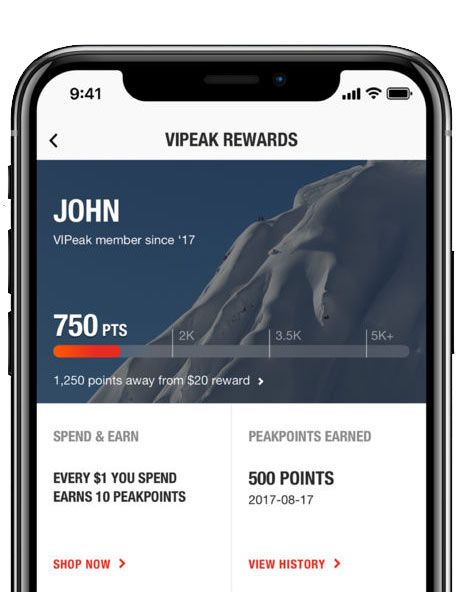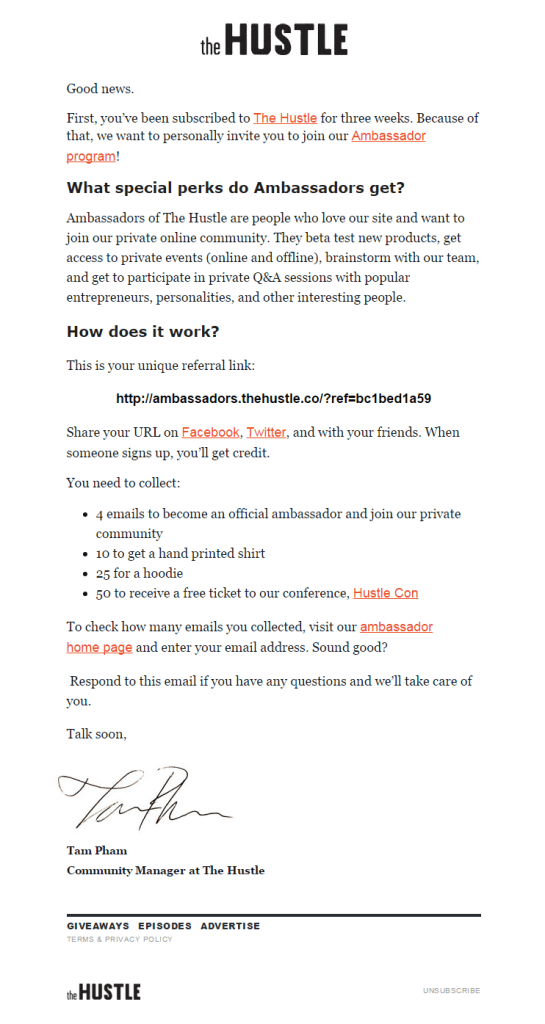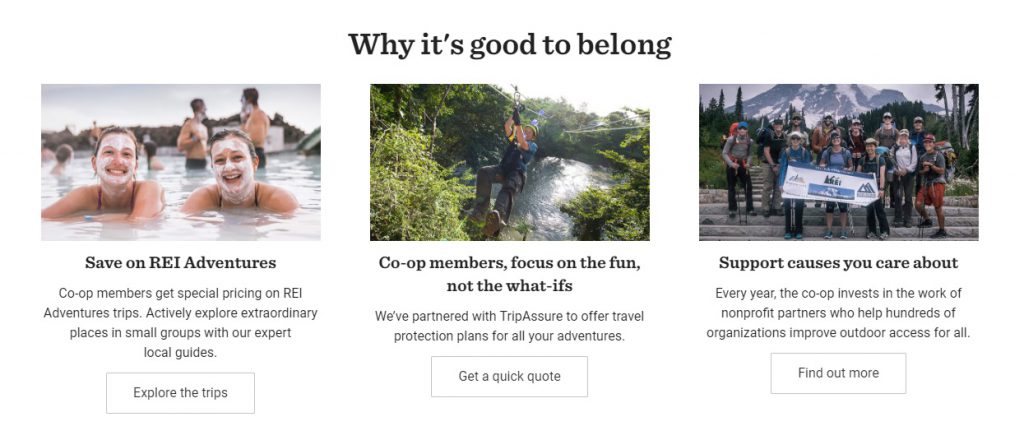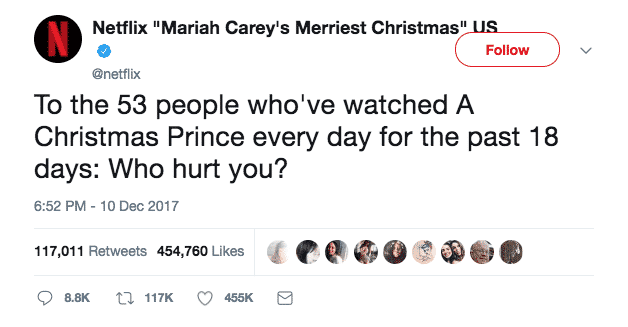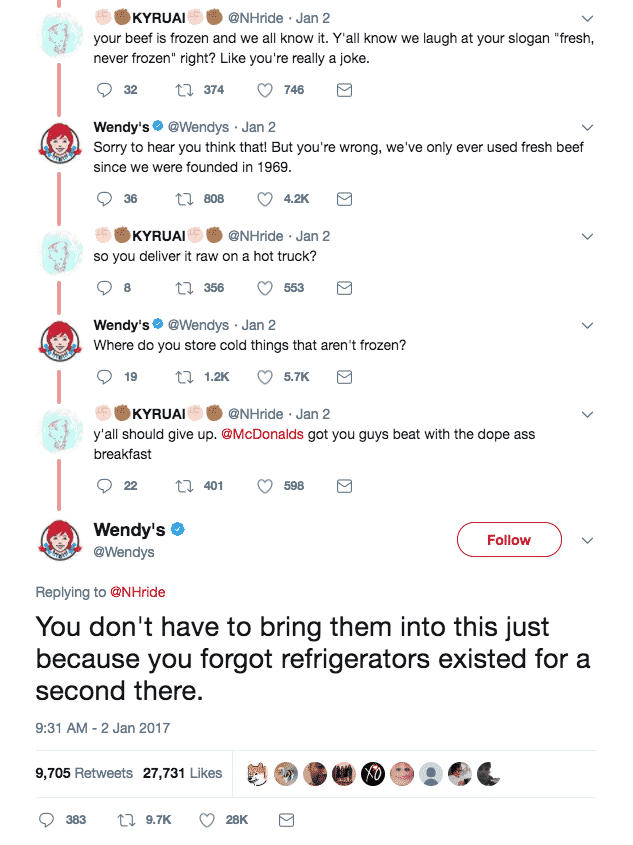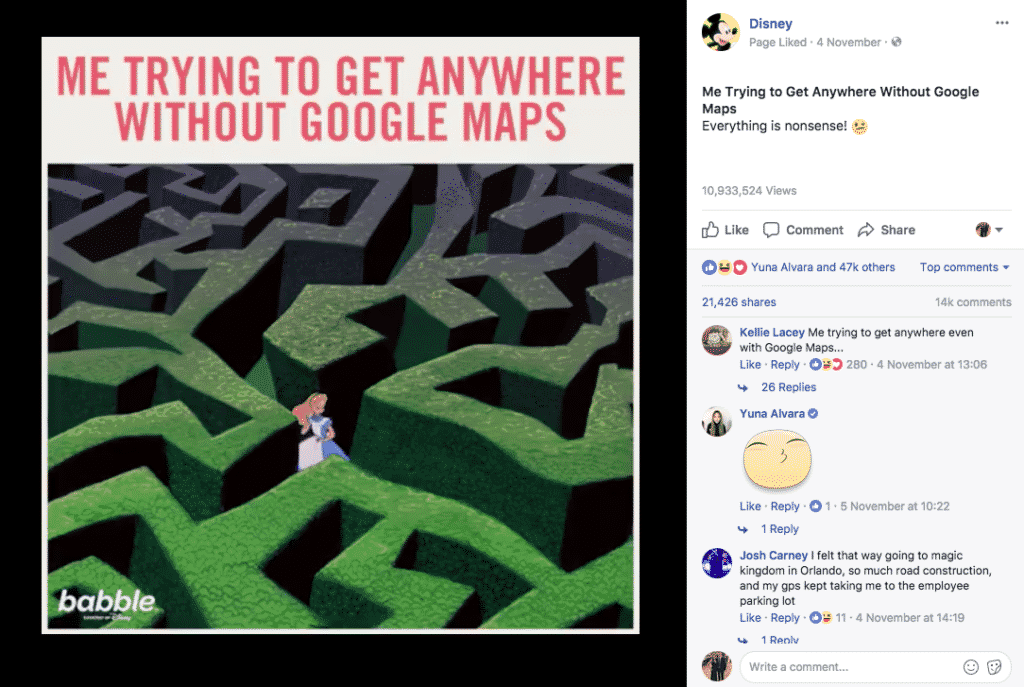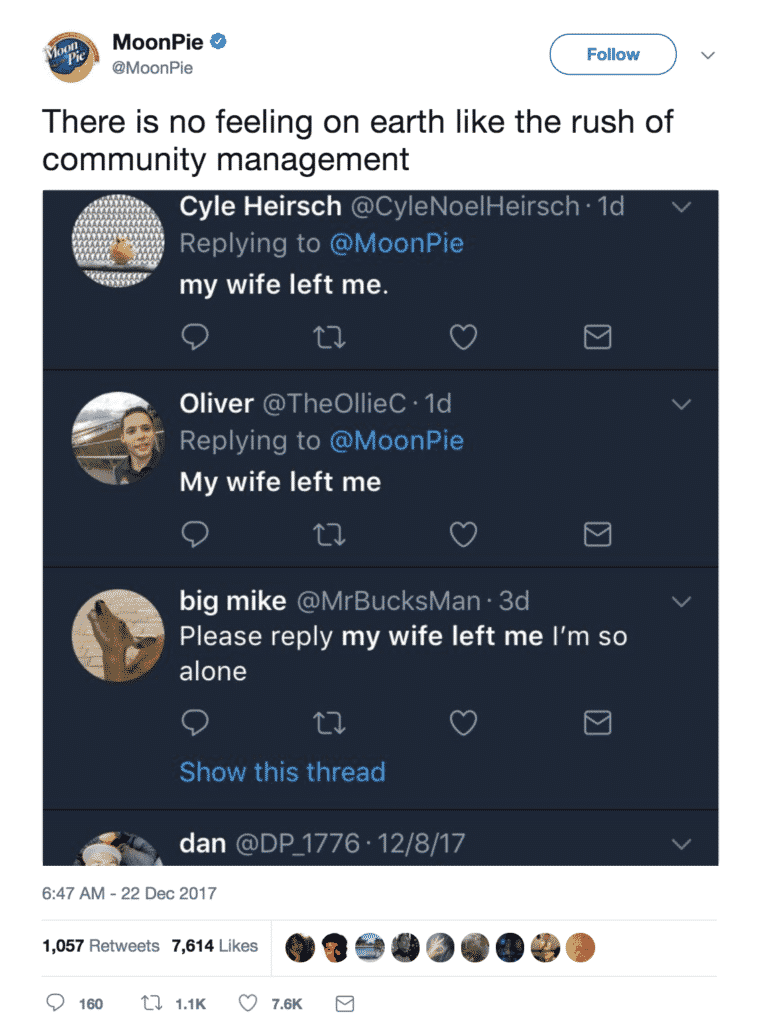If you thought word-of-mouth marketing was dead, think again! Word-of-mouth marketing (WOMM) is still an effective driving force in the digital era of growing eCommerce business. Online reviews, organic social callouts and influencer marketing all fall under the modern version of eCommerce word-of-mouth marketing. And we all know how important reviews are to an online store, right?
The main difference between traditional and modern word-of-mouth marketing strategies is that modern WOMM can be achieved in two ways: organically through natural shoutouts from happy customers, and marketing strategies and paid targeting. Your marketing strategy should include practices that promote both.
Why? Because the benefits of word-of-mouth marketing are huge. WOMM helps you build a community of loyal shoppers and organic brand ambassadors, increase sales organically, and lower acquisition costs while building lifetime loyalty.
In this post, we look at the top benefits of word-of-mouth marketing and how you can use WOMM to boost eCommerce sales. These include reviews and ratings, reward programs, influencer marketing, awesome customer service, surprise gifts and more.
What Word-of-Mouth Marketing Does for Your eCommerce Brand
1. Builds Trust
Trust is the foundation of an online store business. After all, if you can’t build trust, how do you convince new shoppers to check out? In fact, 84% of people trust online reviews as much as they would a recommendation from a trusted family member or friend. Ultimately, whether it’s collecting and displaying reviews or harnessing the power of viral video campaigns, your word-of-mouth strategies are an important part of building brand trust.
2. Builds Loyalty
A strong word-of-mouth marketing strategy keeps your customers coming back, ultimately turning them from once-off shoppers into loyal fans. And you know what loyal fans do? They refer more shoppers to your brand who you can then convert into more loyal customers, and so on. The end goal of your eCommerce business should be retention – because loyal customers can boost your profitability by up to 75%. An impressive example of this are Sephora‘s birthday freebies, launched last year.
Cute birthday gift from Sephora. 🖤
(hard nope to the Kat Von D option that they had) pic.twitter.com/OJBST70Ysk— KORPPIWORPPI (@KORPPIWORPPI) January 26, 2019
3. Builds Hype
The third biggest benefit of building a working word-of-mouth strategy is brand awareness. The holy grail of brand awareness is viral content (which is received well) that spreads organically, and any good WOMM should make it more possible for you to generate product or brand buzz.
A good example of a brand winning at this is Netflix, who was able to tap into binge watching trends and user interests, and have proved successful time and time again. They do this by strategically launching full seasons just in time for the winter holidays and creating content that people talk about.
10 Tips on Building a Winning Word-of-Mouth Marketing Strategy for Your eCommerce Business
Now that you know why to use WOMM, it’s time to look at how you can generate and use word-of-mouth marketing to boost sales. It is important to note, though, that the first thing you want to do to be sure you are able to cash in on word-of-mouth tactics is to ensure you have a great brand, quality products and efficient customer service. You cannot build good WOMM strategies if you are selling products that people ‘boo’ with bad reviews, your store isn’t user-friendly and your customer service is non-existent.
Bonus Content: The Online Store Feedback You’ve Been Waiting For
You also want to ensure that you always stay true to your brand, speak your target shoppers’ language, and deliver outstanding service through each stage of your sales funnel. Once you have built a good store and brand, here are tips on triggers that will help you build a winning word-of-mouth strategy.
1. Stand Out
Be unique, original, one of a kind. No matter which tool you’re using, try to stand out in some way. Whether it’s the type of reward system, the review collection email copy, or the content you create, you want to find a way to separate yourself from the competition. A brand that understands this is Lush. Their whole word-of-mouth strategy is centered on honesty and their content always stands out. But it’s their products that are the real winners. In a Reddit thread, a user raved about a $14 “miracle” body lotion that helped them with their insomnia. The result was felt across all social platforms and the product went viral in a huge way.
Haven’t slept properly in weeks bc jet lag/ill, then last night I slapped on a bit of Lush Sleepy and had a full nine hours! 😱😱😱😱
— Kate Spiers (@katelavie) August 12, 2017
How do they manage to stand out in such a competitive niche? They:
- Have a deep understanding of their target audience
- Create and deliver quality products
- Use social responsibility and embrace a popular cause
- Stay true to their brand
2. Speak Human
The next thing to remember with word-of-mouth strategies and campaigns is to be human. Sure, you can be on brand with voice and tone, but people want to feel like they are communicating with a person or team, not a robot (although robots are cool). Tap into your audience’s emotions and find out what they care about. Whether it’s your hashtag for your brand, a reward program centered around social responsibility, or jumping on a cause they care about, make sure it’s natural and communicates a message human to human. One of the best examples I have seen of this was REI’s first anti-Black Friday #OptOuside campaign.
There are things more important than buying/selling tents – like going outside and actually using them! #OptOutsidehttps://t.co/zgyOiVjxyz
— REI (@REI) November 8, 2018
3. Reward Customers Based on LTV
Customer LTV, or lifetime value, is an important metric to watch when strategizing on word-of-mouth and before you implement reward plans. Not only will it point to your most loyal customers who you want to woo, but it shows you what type of reward you should be offering. Let’s say your LTV average is $67 per customer. You wouldn’t want to create a VIP reward for your best customers for the value of $5, as that won’t make any waves and could have the opposite effect. You also don’t want to be throwing money away by exceeding that value. This is particularly useful for subscription eCommerce models.
A smart example of a brand with a clever, incentivizing loyalty program that balances their LTV, where shoppers can collect points to reach different dollar tiers.
4. Include Word-of-Mouth Prompts in Email Marketing
Use strategic marketing and automated emails to trigger word-of-mouth engagement. This is not just by encouraging social following with links to your biggest platforms in every email, but introducing reward programs early on through welcome series emails to new shoppers. A previous good example of this is from the folks at The Hustle and KoPari. Here are two examples of email trigger copy and reward headers in email you can use.
And it’s hugely successful. The Hustle has managed to grow their subscription numbers to over one million in just two years.
5. Think Visual
No matter what trigger you use, try to make it as visual as possible. The more photos or videos you use and the more shareable they are, the better the word will travel. This includes finding clever ways to display your products that are unique enough for people wanting to share them, or creating a video that you know your target audience will find entertaining and/or helpful. A good example of these are super useful how-to videos. A brand that has become a master at thinking visual is IKEA. From their AR app video that helped create buzz for their launch to their original flip-the-script video and TV campaigns, they are the kings of keeping their shoppers visually wowed.
6. Offer Referral and Loyalty Programs that are Outside the Box
Referral programs are paid WOMM that, if done right, can help you spread the word of your brand to new customers while:
- Incentivizing existing customers
- Increasing lifetime value
- Winning back cold shoppers
- Harnessing brand ambassadors
- Setting you apart from your biggest competition
The trick is to be original, and design something that speaks to your specific audience – after all, they are the ones who should be sharing. Whether you’re offering free gifts for friend invites, points that go towards other loyalty programs or discounts, try to find some way to stand out. For Shopify store owners, there are a bunch of apps out there to help you streamline the process, such as Swell and Smile.io. Here are some simple referral ideas to get you started:
- Gifts
- Discounts for new customers and the customers who referred them
- Points for referrals that go to loyalty programs
- A dollar amount discount off a purchase
Some examples of brands thinking outside the box with their reward programs are Nordstrom’s Nordy club, REI Co-op’s membership which includes travel and social responsibility benefits, and of course Starbucks Rewards – I mean, who doesn’t love free coffee. What all three have in common is that they are designed with their specific target audience in mind.
For newbies, head over to our Ways to Boost Customer Loyalty post to find out more about loyalty and reward programs.
7. Jump on the Influencer Bandwagon
Influencers are another marketing strategy that uses word-of-mouth – that of popular people – to boost sales. The trick is to find influencers who have a very niche set of followers that fit into your target audience perfectly. And it doesn’t just have to be pretty photos of your products. Look at this example from Pedigree that made the 2018 top influencer campaign list.
Here they partnered with influencers for their “Buy a Bag, Give a Bowl” campaign, which centered around a cause, not their product. This campaign resulted in 43 million impressions and 62,800+ content views. This proves that you don’t just want to find influencers who have your targeted shoppers in their list of followers; you want to find a way to display your content in their feeds that emotionally resonates with your target audience.
8. Up Your UGC and Hashtag Game
UGC (user-generated content) is more than just reviews; it’s word-of-mouth on steroids. According to one article, UGC content is 5x more likely to convert, 47% of top content marketing teams rely entirely on UGC, and UGC can lead to increased conversion rates. They also go on to say that by next year, 50% of commercial content will be created outside of marketing departments. There are a few ways you can generate more UGC that are not reviews:
- Keep a spot open on your site to show off customer images
- Create and own branded hashtags in your social pages, thank you emails and on your home page
- Harness internet trends to create an incentive campaign
- Reward your shoppers for content with discounts
- Run a giveaway with UGC entries
Bonus Content: 5 Tools to Increase UGC
And what about reviews?
9. Mine Reviews Like Gold
Remember that little stat we mentioned in the beginning? “84% of people trust online reviews as much as they would a recommendation from a trusted family member or friend” – reviews matter. In a BIG way! It’s the first thing I look for when deciding on a product from a store I have never bought from. How about you?
Reviews and ratings are the foundation of almost any business and the most important part of your word-of-mouth strategy.
With apps like YotPo, generating reviews is super easy, automated and one of the best eCommerce business investments you will make. But don’t just stop at putting reviews on home and product pages; use reviews like UGC and share the love on social media.
10. Put More Effort into Your Content Marketing Strategies
Word-of-mouth isn’t just about your brand, site and products. Epic, non-salesly content can also go a long way. This can be your blog content, video content, how-to guides, social posts or video ads. Think of those viral videos from Dollar Shave Club.
Don’t think investing in killer video content is worth the high spend? Dollar Shave Club is now worth $1 billion, in just eight years.
By creating awesome (shareable) content, you will not only drive traffic, shares and awareness; you will be positioning your brand as the expert in your niche. Here’s our Content Marketing Guide to get you started.
11. Go Back to Basics With Social Media
Yes, you need Facebook ads to push traffic to your store. However, so many online stores focus so much on their ads they forget the importance of what social media was designed for: being social.
You don’t want to be flooding your pages with just ads or products; you want to push shareable content. Additionally, you also want to be engaged with your customers. I can’t tell you how many well-established stores ignore comments on their social pages, especially the negative comments. Don’t be afraid of complaints; they can lead to good WOMM opportunities as well. Here are some examples of those who are winning, according to Newswhip.
Netflix
Wendy’s
Disney
MoonPie
—
There is no denying that eCommerce word-of-mouth marketing can be very effective. However, you shouldn’t be aiming for huge viral numbers with every post or 100s of reviews in a day. Instead, you want to ‘go viral’ in your niche, engage a good percentage of your own followers, and build solid review strategies overnight. Dollar Shave Club didn’t reach a billion overnight – it took hard work, consistent engagement and putting a lot of budget into their word-of-mouth strategies.
If only Bradley’s arm was longer. Best photo ever. #oscars pic.twitter.com/C9U5NOtGap
— Ellen DeGeneres (@TheEllenShow) March 3, 2014
How do you encourage your shoppers to spread the word about your brand? Let us know in the comments below.

Nicole is a content writer at StoreYa with over sixteen years experience and flair for storytelling. She runs on a healthy dose of caffeine and enthusiasm. When she's not researching the next content trend or creating informative small business content, she's an avid beachgoer, coffee shop junkie and hangs out on LinkedIn.
Recommended articles
 Facebook Ads for eCommerce: 16 Strategies, Examples & Tips
Facebook Ads for eCommerce: 16 Strategies, Examples & Tips
 How to Build a Winning eCommerce Ads Strategy
How to Build a Winning eCommerce Ads Strategy
 Google Ads for eCommerce: Everything You Need to Know
Google Ads for eCommerce: Everything You Need to Know
 10X Your Traffic with PPC Management Software
10X Your Traffic with PPC Management Software
Comments
Powered by Facebook Comments
